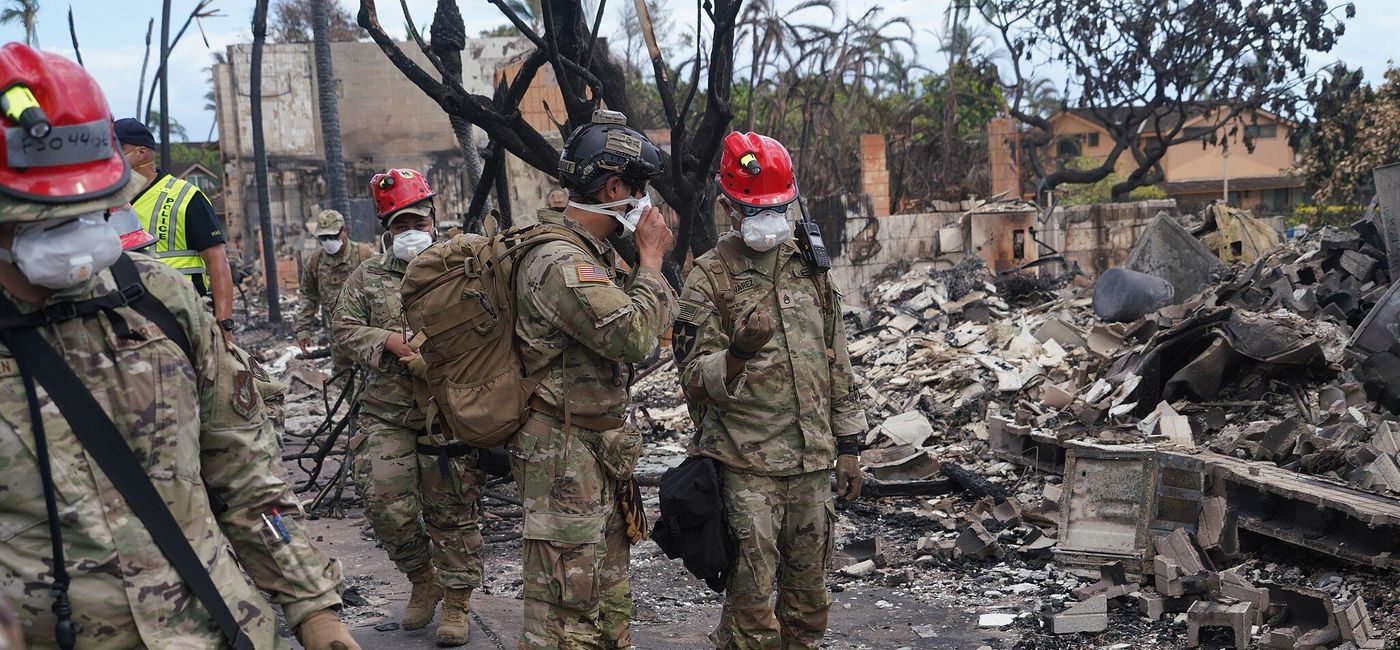Maui Travelers Advised to Postpone Vacation Plans Amid Wildfires Impact

In the wake of the catastrophic wildfires that swept through Maui this week, the Hawaiʻi Tourism Authority (HTA )is discouraging anyone with imminent vacation plans from traveling to the island. The agency reports that visitors have largely heeded the call to evacuate the region and roughly 46,000 people have flown out of Kahului Airport since the fire broke out on Wednesday.
“In the weeks ahead, the collective resources and attention of the federal, state and county government, the West Maui community, and the travel industry must be focused on the recovery of residents who were forced to evacuate their homes and businesses,” the HTA reported in a media update.
Those with visits planned in the coming weeks and months are being urged to reschedule their travel arrangements for dates further into the future, when the overall situation for area residents and businesses will have presumably improved.
The Current Situation
The region’s hotels have temporarily suspended new bookings for the foreseeable future. “At this time, many hotels are housing their employees and families until the fires in West Maui are fully contained and travel on the roadways is safe. These same hotels are preparing to house evacuees and first responders working on disaster recovery,” the HTA reported.
Although efforts to restore basic services, such as power and communications, are already underway, travelers are being told to wait until the situation improves before trying to reach West Maui hotels about changing existing reservations.
Those who are still evacuating from West Maui or needing to pass by Lāhainā to pick up their belongings are reminded to comply with the protocols laid out by Maui Country officials and local law enforcement. The Assistance Center at the Hawai‘i Convention Center is today being relocated to the Keʻehi Lagoon Memorial in Honolulu.
The Assistance Center, set up to support displaced residents and visitors, is being operated in partnership with the American Red Cross and has served nearly 300 evacuees since opening on August 9. Evacuees are being provided with temporary lodgings until they’re able to fly home or secure their own hotel accommodations. Food and water, showers, toiletries and clothes are all being provided to those in need, free of charge.
Travel to the other Hawaiian Islands, including Kauaʻi, Oʻahu, Lānaʻi, and the Big Island of Hawaiʻi, remains unaffected at this time.
About the West Maui Wildfires
The fast-moving inferno began tearing through Lāhainā on the morning of August 9. More than 2,200 structures were damaged or destroyed, leaving thousands of locals homeless and causing an estimated $5.5 billion in damage. According to Barron’s, this is the deadliest U.S. wildfire in nearly a century, since 453 people died in a blaze across Minnesota and Wisconsin in 1918.
According to reports, the no emergency sirens sounded as the fire raged through Lāhainā and power outages meant that many residents didn’t receive emergency alerts on their mobile phones, either. This week’s calamitous conflagration in West Maui is just the latest in a string of extreme weather events in North America this summer that are linked to the ever-worsening climate crisis.
As of Sunday morning, there were at least 93 confirmed fatalities linked to the devastating natural disaster that has razed the historic coastal town of Lāhainā —once the home of the Hawaiian royal family—to the ground. The HTA said that the true extent of the damage has yet to be fully understood, but experts warn that hazardous materials are likely present at its epicenter, which remains off limits to the public.
Appearing on CBS’s ‘Face the Nation’ on Sunday, FEMA Administrator Deanne Criswell, head of the federal government’s disaster response effort, said that the death toll is likely to rise even further in coming days, since only three percent of the burned-out areas have yet been searched for possible survivors and victims’ remains.
You can keep up with the latest updates on the island’s ongoing situation by visiting the County of Maui website.
